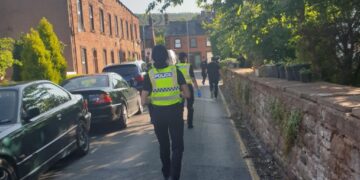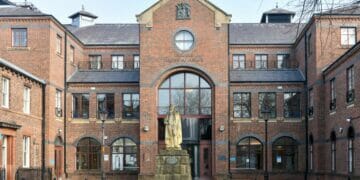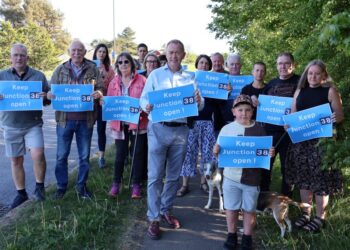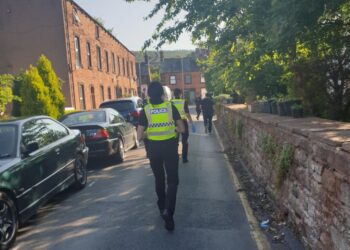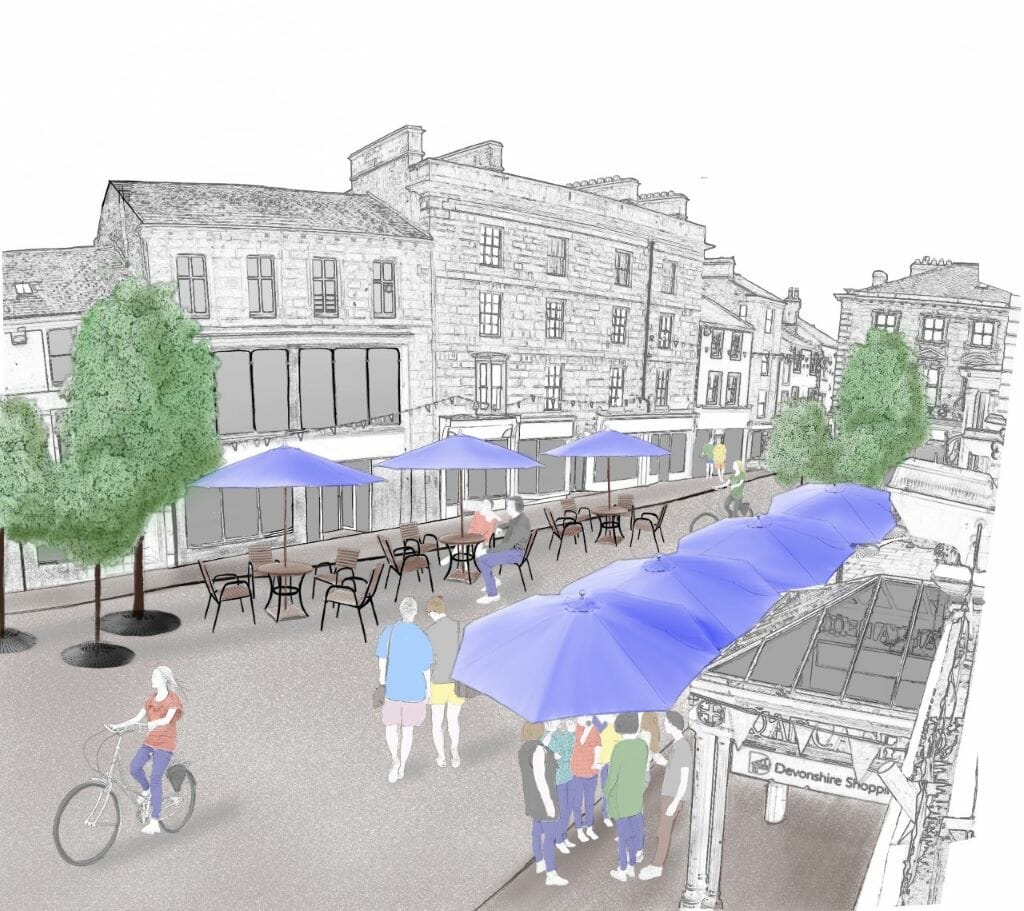
How could Penrith look and feel if its town centre was a traffic-free zone? That is the question being asked this week following the publication of a paper on the thorny topic of pedestrianisation.
A year on from the launch of its radical and wide-ranging vision for Penrith, the group behind the Penrith Futures Partnership has released its latest discussion document on the “hot button” topic of pedestrianisation.
Feelings about the potential for Penrith’s centre to become fully or partially car-free have run high for decades, with strongly held views on both sides of the debate.
A decision by Cumbria County Council to temporarily close off town centre streets to traffic during the pandemic caused an outcry, with many retailers furious at what they saw as an attack on their ability to make a living during an already tough time.
The Penrith Futures Partnership — representing many different facets of town life, from business to local politics — have highlighted what they say is a lack of strategy around town centre planning and described their aim as “reshaping and reimagining Penrith’s town centre”.
They have worked to develop a range of discussion documents on issues ranging from arts and culture to Castle Park and now town centre traffic management.
Their latest 26-page discussion document is ambitious in its scope and throws down the gauntlet to residents and policy makers to embrace change.
“It would be fair to say that most of today’s residents would like their town centre to be less noisy, with safe spaces, green areas and street cafes. Our town centre will survive only as long as people enjoy the experience of being there,” it states.
“Leisure and recreational opportunities and quirky and experiential retail; a place to wander, dawdle, experience, explore and enjoy. This is exactly what the thriving and successful town centres elsewhere have become, or are in the process of becoming. Towns that lack the foresight to move with the times are enduring a steep decline.
“Although there has been significant developments all around the outskirts of our town, the centre, at best, has stagnated.”
“Unless we can persuade those who fear and resist progress to embrace positive change, the town’s destiny looks grim.
“Penrith will fall further and further behind unless we adopt bold and radical solutions. Ironically, what is sometimes perceived as bold and radical in Penrith, is actually mainstream thinking in many other towns.”
The report identifies heavy traffic in the town centre, and linked pollution and noise, as making Penrith “not an environmentally pleasant place to visit”.
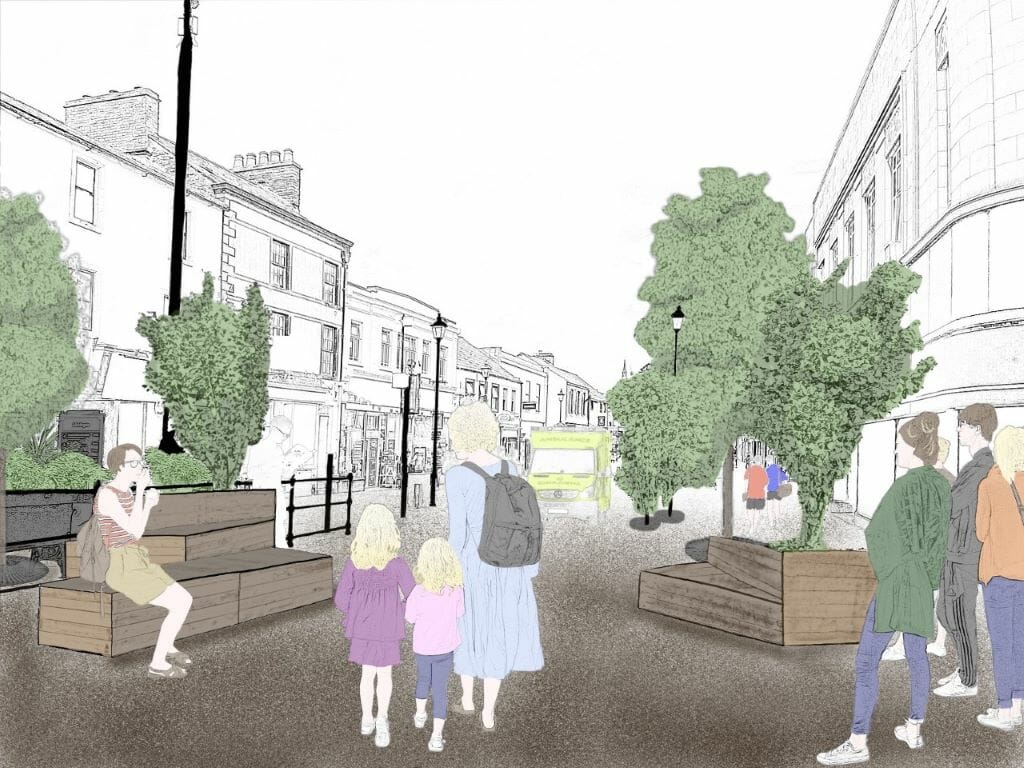
And parking is seen as a key problem to be solved before any progress can be made.
The document seeks to address some of the arguments put forward by those against traffic-free streets, such as access for emergency and delivery vehicles and people with disabilities.
It also sets out suggestions for “what might happen now”, including “the creation of traffic-free zones as part of a comprehensive package of measures to regenerate the town centre”.
A spokesman for the Partnership told the Herald: “Most of the towns and cities in our part of the world have incorporated elements of traffic limitation and pedestrianisation into their development and regeneration plans.
“For example, people are able to enjoy traffic free areas in towns like Keswick, Kendal, Whitehaven, Workington, Barrow, Hexham, Dumfries, Gretna, Stockton, Darlington and Bishop Auckland as well as in northern cities such as Carlisle, Durham, Manchester, York and Newcastle.
“Though there are significant differences in the character and layout of these town and city centres, traffic limitations have been a resounding success. There appears to be no logical reason why the same measures can’t be at the centre of the regeneration of Penrith’s town centre.”
Partnership member and business consultant Richard Utting highlighted the purpose of the document. “This new document is not intended as a set of proposals but rather to resource a much-needed debate on one key aspect of our town centre and its future. We feel that it is helpful for the whole town to have a positive, polite, constructive and informed debate about the future of our town centre.”
Dave Knaggs, Penrith town councillor, said: “In order to survive and prosper, our town centre must be subject to review, shifts in priorities, adjustments and refinements. Towns must periodically reimagine themselves in order to accommodate the lifestyle and preferences favoured by the generation that currently occupies it.
“This is what has happened in Penrith, until now. We seem to be in a period of stagnation, paralysed and bewildered by the speed and scale of change to the town centre. However, with careful planning, this period of decline can be reversed.”
The document concludes: “The town centre will only be economically strong if the retail and leisure experiences attract the footfall need to make it sustainable. It will only do this if it is engaging by creating a vibrant centre which provides social, leisure, services, activity, entertainment, retail and human connections with the local community including public services, local businesses and charities.”
“It goes without saying — the more things don’t change, the more they stay the same”.
Crucial to the partnership’s vision is a high level of public engagement with the discussion paper. Feedback from those living and working in the town, and those visiting, will be a vital tool in influencing policy and even applying for funding from outside bodies, they believe.
The Herald is hosting this feedback form on behalf of the partnership – we are not part of the group.





